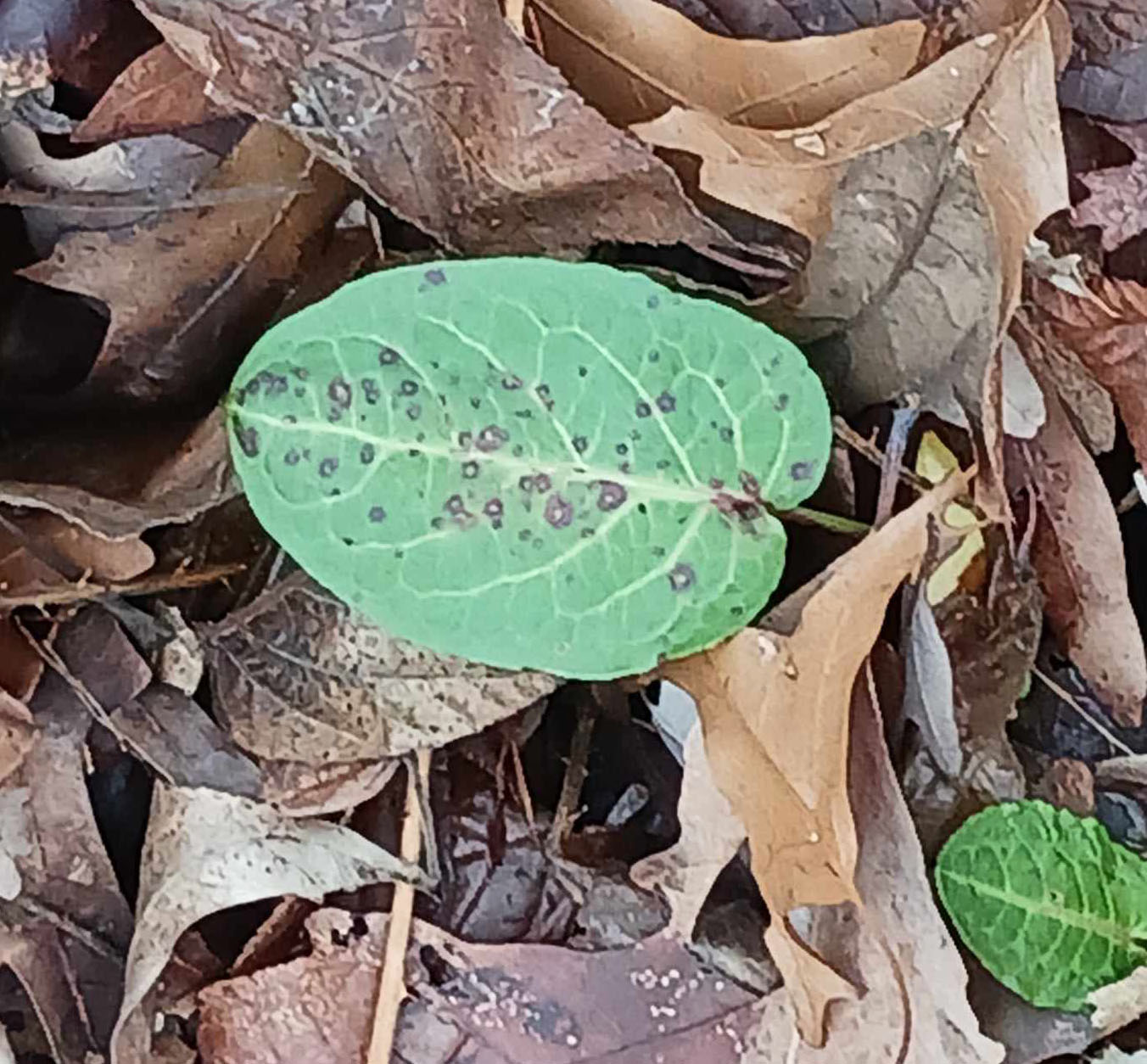Walking in Beauty
January 11, 2024
Wearing winter well
Snow, sleet, rain. We’ve had it all this week, sometimes all in one hour.
We enjoy the comfort of our heated homes in the winter, and when weather gets extreme, we can opt to stay in and safe.
What do the woodland animals do?
Thus far, the winter has been unseasonably warm. I have heard robins’ song and found fresh green plants from the dock family growing at Brennan Woods.


These dock sprouts emerged from the leaf litter at Brennan Woods this winter.
Did a deer take advantage of that crispy green snack before a blob of wet snow obscured it?
Over the past couple of weeks, I have frequently been greeted by deer at Conservancy preserves. It might be a swish in the brush or the snap of a branch.
I stop, stand still, and scan the woods. Their tan-colored hides fade against the tree trunks, but sometimes a black nose wiggles and sniffs. Big doe eyes, alert to the new presence. Muscles tense, ready to run.
The longer I stand there, the more faces I see, staring skittishly back at me.
When one turns and runs, they all follow suit, their white tails sending up flags as they melt into the forest.
This time of year, there are a lot more deer tracks than people tracks in the soft earth of the trails. One can find matted grass or clearings in thickets where the deer sleep.
What is it like for the deer on weeks like this one, when cold, hard rain is followed by snow and then freezing nights?
Deer’s winter coats insulate them and help keep their body heat from escaping. The outer coat is knitted with long, hollow hairs that repel water and absorb heat from the sun. The undercoat is very dense, short, soft hair.
Deer shelter in thickets or under pine trees, and use their antlers to brush away snow to forage for acorns and other sustenance, surviving with a reserve of body fat. During long, freezing winters, they resort to eating twigs and the bark from trees.
Last winter, I went outside to find a herd feasting on an evergreen bush in my yard. They thinned it out significantly but I bet the groundhog still burrows underneath it. Groundhog burrows are used by other animals, too, like snakes, amphibians, rodents and foxes, as a winter retreat.

Jeannine Fleegle, Wildlife Biologist for the Pennsylvania Game Commission, shared this photo of fawns sleeping in a snow bank. Fleegle eloquently imparts a wealth of knowledge about white-tailed deer in The Deer Forest Blog at https://www.deer.psu.edu/category/the-deer-forest-blog/
